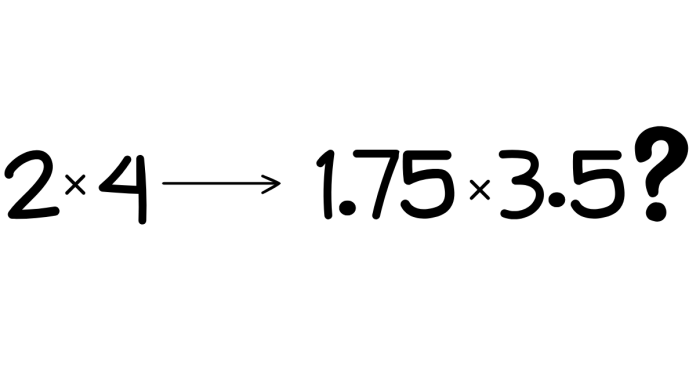If you’ve ever worked on a DIY project or done any construction, you might have noticed something odd about lumber measurements: a “2×4” isn’t actually 2 inches by 4 inches. Instead, its true dimensions are typically 1.75 inches by 3.5 inches. So why is there a discrepancy? Let’s break it down.
The Origins of the 2×4
Historically, the term “2×4” referred to the rough-cut size of the lumber. When a tree is milled into lumber, the boards are initially cut to their “nominal size,” which in this case would be 2 inches by 4 inches. This nominal size is used as a reference, but the actual dimensions change during the manufacturing process.
Why Are 2x4s Smaller Than Advertised?
There are two primary reasons why a 2×4 isn’t actually 2 inches by 4 inches:
- Planing and Smoothing the Lumber:
After the rough cut, the wood is dried and then planed to create smooth edges and surfaces. This process reduces the dimensions of the board.- During the planing process, about ¼ inch is shaved off each side, leaving the board smaller than its nominal size.
- For a “2×4,” this results in a final size of 1.75 inches by 3.5 inches.
- Moisture Content and Shrinkage:
When wood is first cut, it contains a high amount of moisture. As it dries (either naturally or in a kiln), it shrinks slightly. This further reduces the final dimensions.
Standardization in Lumber Sizes
To avoid confusion, the lumber industry has standardized the dimensions of wood, so a 2×4 is always the same size regardless of the supplier. These standardized sizes have been in place for decades, ensuring uniformity in construction materials.
For reference:
- A 2×4 is actually 1.75 inches x 3.5 inches.
- A 1×6 is actually ¾ inch x 5.5 inches.
- A 4×4 is actually 3.5 inches x 3.5 inches.
Nominal vs. Actual Sizes: Why Keep the Misleading Names?
While the actual dimensions don’t match the nominal sizes, the original naming conventions have stuck for simplicity and tradition. Most builders and DIY enthusiasts are accustomed to calling these pieces by their nominal sizes, and changing the terminology now would likely create more confusion than it’s worth.
Why Does This Matter?
Understanding the actual size of lumber is crucial for several reasons:
- Accurate Measurements: When planning a project, you need to know the true dimensions to ensure proper fits and cuts.
- Structural Integrity: Knowing the actual dimensions helps calculate load capacities and structural strength.
- Avoiding Wastage: Accurate measurements prevent costly mistakes and wasted materials.
How to Measure Lumber Correctly
If you’re buying lumber for a project, always check both the nominal size and the actual size. Most hardware stores list both measurements, so you can confirm exactly what you’re getting. A simple tape measure can save you from surprises when you start cutting and assembling.
While the label “2×4” suggests one thing, the actual dimensions of the board are 1.75 inches by 3.5 inches due to milling, drying, and planing. It’s a quirky tradition rooted in the history of lumber production, but it’s one that most builders have learned to navigate.
Now that you know the truth about lumber sizing, you can approach your next construction or DIY project with confidence—and without any surprises!



